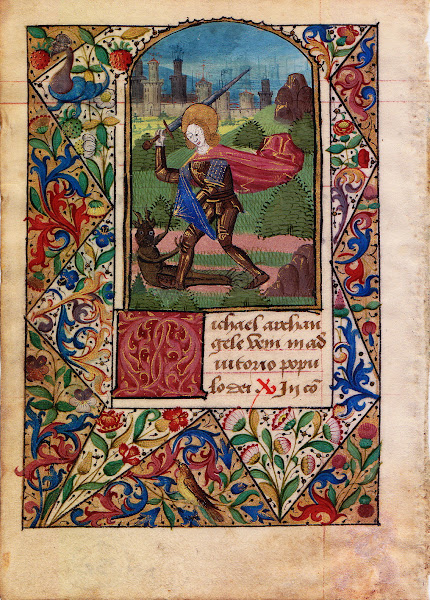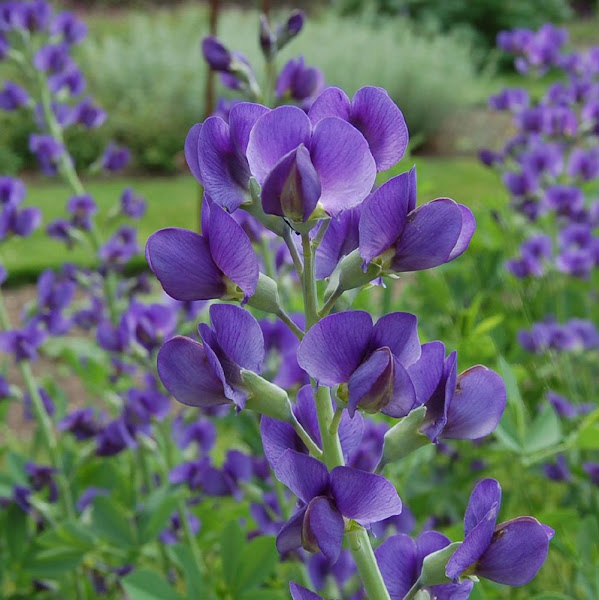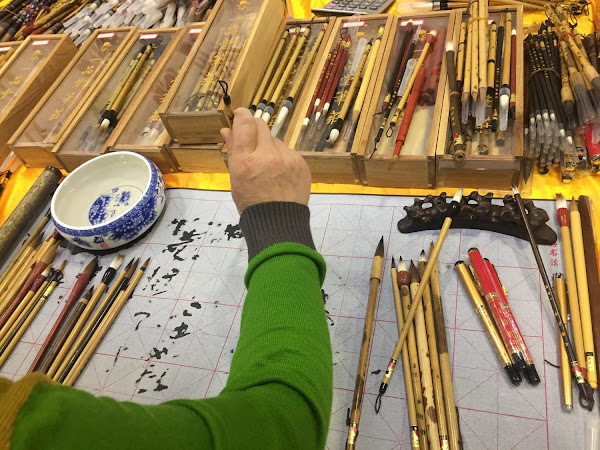Preamble
This is the fifteenth post in a new Art Resource series that specifically focuses on techniques used in creating artworks. For your convenience I have listed all the posts in this new series below:
Drawing Art
Painting Art - Part I
Painting Art - Part II
Painting Art - Part III
Painting Art - Part IV
Painting Art - Part V
Painting Art - Part VI
Home-Made Painting Art Materials
Quality in Ready-Made Artists' Supplies - Part I
Quality in Ready-Made Artists' Supplies - Part II
Quality in Ready-Made Artists' Supplies - Part III
Historical Notes on Art - Part I
Historical Notes on Art - Part II
Historical Notes on Art - Part III
Historical Notes on Art - Part IV
Historical Notes on Art - Part V
Tempera Painting
Oil Painting - Part I
Oil Painting - Part II
Oil Painting - Part III
Oil Painting - Part IV
Oil Painting - Part V
Oil Painting - Part VI
Pigments
Classification of Pigments - Part I
Classification of Pigments - Part II
Classification of Pigments - Part III
Pigments for Oil Painting
Pigments for Water Color
Pigments for Tempera Painting
Pigments for Pastel
Japanese Pigments
Pigments for Fresco Painting - Part I
Pigments for Fresco Painting - Part II
Selected Fresco Palette for Permanent Frescoes
Properties of Pigments in Common Use
Blue Pigments - Part I
Blue Pigments - Part II
Blue Pigments - Part III
Green Pigments - Part I
Green Pigments - Part II
Red Pigments - Part I
Red Pigments - Part II
Yellow Pigments - Part I
Yellow Pigments - Part II
Brown and Violet Pigments
Black Pigments
White Pigments - Part I
White Pigments - Part II
White Pigments - Part III
Inert Pigments
There have been another one hundred and thirteen posts in a previous Art Resource series that have focused on the following topics:
(i) Units used in dyeing and printing of fabrics;
(ii) Occupational, health & safety issues in an art studio;
(iii) Color theories and color schemes;
(iv) Optical properties of fiber materials;
(v) General properties of fiber polymers and fibers - Part I to Part V;
(vi) Protein fibers;
(vii) Natural and man-made cellulosic fibers;
(viii) Fiber blends and melt spun fibers;
(ix) Fabric construction;
(x) Techniques and woven fibers;
(xi) Basic and figured weaves;
(xii) Pile, woven and knot pile fabrics;
(xiii) Nainkage, durable press and wash-wear finishes;
(xvi) Classification of dyes and dye blends;
(xv) The general theory of printing.
To access any of the above resources, please click on the following link - Units Used in Dyeing and Printing of Fabrics. This link will highlight all of the one hundred and thirteen posts in the previous a are eight data bases on this blogspot, namely, the Glossary of Cultural and Architectural Terms, Timelines of Fabrics, Dyes and Other Stuff, A Fashion Data Base, the Glossary of Colors, Dyes, Inks, Pigments and Resins, the Glossary of Fabrics, Fibers, Finishes, Garments and Yarns, Glossary of Art, Artists, Art Motifs and Art Movements, Glossary of Paper, Photography, Printing, Prints and Publication Terms and the Glossary of Scientific Terms. All data bases in the future will be updated from time-to-time.
If you find any post on this blog site useful, you can save it or copy and paste it into your own "Word" document for your future reference. For example, Safari allows you to save a post (e.g. click on "File", click on "Print" and release, click on "PDF" and then click on "Save As" and release - and a PDF should appear where you have stored it). Safari also allows you to mail a post to a friend (click on "File", and then point cursor to "Mail Contents On This Page" and release). Either way, this or other posts on this site may be a useful Art Resource for you.
The new Art Resource series will be the first post in each calendar month. Remember - these Art Resource posts span information that will be useful for a home hobbyist to that required by a final year University Fine-Art student and so undoubtedly, some parts of any Art Resource post may appear far too technical for your needs (skip those mind boggling parts) and in other parts, it may be too simplistic with respect to your level of knowledge (ditto the skip). The trade-off between these two extremes will mean that Art Resource posts will be hopefully useful in parts to most, but unfortunately may not be satisfying to all!
Historical Notes on Art - Part IV [1]
Medieval Europe
The period which follows, i.e., the early Christian or medieval era, supplies us with a somewhat larger number of surviving examples of painting, and also with written accounts of more definite character in all countries. These include manuscripts written by contemporary craftsmen and specialists for the purpose of disseminating their knowledge, records of expenditures of materials and letters of painters.
Illuminated Manuscript: Saint Michael Battling a Demon.
Much of our knowledge and evidence concerning techniques of the past is based on the study and careful interpretation of the early manuscripts. A long list of such documents could be made; some of them are well known to students, and others have received little attention. Most of them have been translated into English and critically interpreted by experts, some of which are in the form of art dictionaries focussed on artists of a particular nationality.
The Orient
As with the earliest European painters, permanence was regarded by the Chinese and Japanese as an essential requirement in a work of art. The Japanese have carried on this tradition and today they use the same list of twenty or so pigments that they used centuries ago. The Japanese pigments are basically pastel pigments. The finely powdered minerals differ in shade from the same minerals more coarsely powdered. The basic pigments are listed below:
White
Ground quartz crystal (sui sho matsu).
Ground calcite (hokai matsu).
Shell white (go fun).
Mica (unmo).
Note: The whites have various textural and reflective characteristics.
Blue
Powdered azurite (gunjo).
Very finely powdered azurite (byankugun).
Japanese indigo (ai).
Green
Malachite (byaku roku)
Bluish Green
Azurite and malachite mixture.
Malachite rich (shin sha).
Burnt azurite and malachite.
Azurite rich (yakigunroku).
Red
Pure vermilion.
"Red" (hon shu goku akakuchi).
Cochineal red (enji).
Red lead (tan).
Red earth color (benigara).
Yellow earth (odo).
Although most colors in the above list are of natural mineral origin, one (indigo) is derived from a plant and another (cochineal) from an insect.
Wild Indigo Plant.
Cochineal insect.
It must be understood that paintings created by Oriental artists are not as continuously exposed to light as Western works of art. Their paintings are rolled up and stored in individual wooden boxes after a brief showing.
Chinese box used for storing Chinese artwork.
The Chinese were well acquainted with several kinds of drying oils for many centuries and employed them for various technical purposes, but their pictorial art was confined to ink and water-color tints on paper.
An Ancient Chinese Painting.
A drying oil was used as a medium for the vermilion seal that was impressed by the artist on each painting. Their fundamental conceptions of pictorial art were exactly served by the materials they used, and although in later days they might have absorbed Western influences and ideas, the Chinese have always rejected Western materials.
Tradition Chinese art implements.
Reference:
[1] The Artist's Handbook of Materials and Techniques, R. Mayer, (ed. E. Smith) 4th Edition, Faber and Faber, London (1981).
This is the fifteenth post in a new Art Resource series that specifically focuses on techniques used in creating artworks. For your convenience I have listed all the posts in this new series below:
Drawing Art
Painting Art - Part I
Painting Art - Part II
Painting Art - Part III
Painting Art - Part IV
Painting Art - Part V
Painting Art - Part VI
Home-Made Painting Art Materials
Quality in Ready-Made Artists' Supplies - Part I
Quality in Ready-Made Artists' Supplies - Part II
Quality in Ready-Made Artists' Supplies - Part III
Historical Notes on Art - Part I
Historical Notes on Art - Part II
Historical Notes on Art - Part III
Historical Notes on Art - Part IV
Historical Notes on Art - Part V
Tempera Painting
Oil Painting - Part I
Oil Painting - Part II
Oil Painting - Part III
Oil Painting - Part IV
Oil Painting - Part V
Oil Painting - Part VI
Pigments
Classification of Pigments - Part I
Classification of Pigments - Part II
Classification of Pigments - Part III
Pigments for Oil Painting
Pigments for Water Color
Pigments for Tempera Painting
Pigments for Pastel
Japanese Pigments
Pigments for Fresco Painting - Part I
Pigments for Fresco Painting - Part II
Selected Fresco Palette for Permanent Frescoes
Properties of Pigments in Common Use
Blue Pigments - Part I
Blue Pigments - Part II
Blue Pigments - Part III
Green Pigments - Part I
Green Pigments - Part II
Red Pigments - Part I
Red Pigments - Part II
Yellow Pigments - Part I
Yellow Pigments - Part II
Brown and Violet Pigments
Black Pigments
White Pigments - Part I
White Pigments - Part II
White Pigments - Part III
Inert Pigments
There have been another one hundred and thirteen posts in a previous Art Resource series that have focused on the following topics:
(i) Units used in dyeing and printing of fabrics;
(ii) Occupational, health & safety issues in an art studio;
(iii) Color theories and color schemes;
(iv) Optical properties of fiber materials;
(v) General properties of fiber polymers and fibers - Part I to Part V;
(vi) Protein fibers;
(vii) Natural and man-made cellulosic fibers;
(viii) Fiber blends and melt spun fibers;
(ix) Fabric construction;
(x) Techniques and woven fibers;
(xi) Basic and figured weaves;
(xii) Pile, woven and knot pile fabrics;
(xiii) Nainkage, durable press and wash-wear finishes;
(xvi) Classification of dyes and dye blends;
(xv) The general theory of printing.
To access any of the above resources, please click on the following link - Units Used in Dyeing and Printing of Fabrics. This link will highlight all of the one hundred and thirteen posts in the previous a are eight data bases on this blogspot, namely, the Glossary of Cultural and Architectural Terms, Timelines of Fabrics, Dyes and Other Stuff, A Fashion Data Base, the Glossary of Colors, Dyes, Inks, Pigments and Resins, the Glossary of Fabrics, Fibers, Finishes, Garments and Yarns, Glossary of Art, Artists, Art Motifs and Art Movements, Glossary of Paper, Photography, Printing, Prints and Publication Terms and the Glossary of Scientific Terms. All data bases in the future will be updated from time-to-time.
If you find any post on this blog site useful, you can save it or copy and paste it into your own "Word" document for your future reference. For example, Safari allows you to save a post (e.g. click on "File", click on "Print" and release, click on "PDF" and then click on "Save As" and release - and a PDF should appear where you have stored it). Safari also allows you to mail a post to a friend (click on "File", and then point cursor to "Mail Contents On This Page" and release). Either way, this or other posts on this site may be a useful Art Resource for you.
The new Art Resource series will be the first post in each calendar month. Remember - these Art Resource posts span information that will be useful for a home hobbyist to that required by a final year University Fine-Art student and so undoubtedly, some parts of any Art Resource post may appear far too technical for your needs (skip those mind boggling parts) and in other parts, it may be too simplistic with respect to your level of knowledge (ditto the skip). The trade-off between these two extremes will mean that Art Resource posts will be hopefully useful in parts to most, but unfortunately may not be satisfying to all!
Historical Notes on Art - Part IV [1]
Medieval Europe
The period which follows, i.e., the early Christian or medieval era, supplies us with a somewhat larger number of surviving examples of painting, and also with written accounts of more definite character in all countries. These include manuscripts written by contemporary craftsmen and specialists for the purpose of disseminating their knowledge, records of expenditures of materials and letters of painters.
Illuminated Manuscript: Saint Michael Battling a Demon.
Much of our knowledge and evidence concerning techniques of the past is based on the study and careful interpretation of the early manuscripts. A long list of such documents could be made; some of them are well known to students, and others have received little attention. Most of them have been translated into English and critically interpreted by experts, some of which are in the form of art dictionaries focussed on artists of a particular nationality.
The Orient
As with the earliest European painters, permanence was regarded by the Chinese and Japanese as an essential requirement in a work of art. The Japanese have carried on this tradition and today they use the same list of twenty or so pigments that they used centuries ago. The Japanese pigments are basically pastel pigments. The finely powdered minerals differ in shade from the same minerals more coarsely powdered. The basic pigments are listed below:
White
Ground quartz crystal (sui sho matsu).
Ground calcite (hokai matsu).
Shell white (go fun).
Mica (unmo).
Note: The whites have various textural and reflective characteristics.
Blue
Powdered azurite (gunjo).
Very finely powdered azurite (byankugun).
Japanese indigo (ai).
Green
Malachite (byaku roku)
Bluish Green
Azurite and malachite mixture.
Malachite rich (shin sha).
Burnt azurite and malachite.
Azurite rich (yakigunroku).
Red
Pure vermilion.
"Red" (hon shu goku akakuchi).
Cochineal red (enji).
Red lead (tan).
Red earth color (benigara).
Yellow earth (odo).
Although most colors in the above list are of natural mineral origin, one (indigo) is derived from a plant and another (cochineal) from an insect.
Wild Indigo Plant.
Cochineal insect.
It must be understood that paintings created by Oriental artists are not as continuously exposed to light as Western works of art. Their paintings are rolled up and stored in individual wooden boxes after a brief showing.
Chinese box used for storing Chinese artwork.
The Chinese were well acquainted with several kinds of drying oils for many centuries and employed them for various technical purposes, but their pictorial art was confined to ink and water-color tints on paper.
An Ancient Chinese Painting.
A drying oil was used as a medium for the vermilion seal that was impressed by the artist on each painting. Their fundamental conceptions of pictorial art were exactly served by the materials they used, and although in later days they might have absorbed Western influences and ideas, the Chinese have always rejected Western materials.
Tradition Chinese art implements.
Reference:
[1] The Artist's Handbook of Materials and Techniques, R. Mayer, (ed. E. Smith) 4th Edition, Faber and Faber, London (1981).








No comments:
Post a Comment